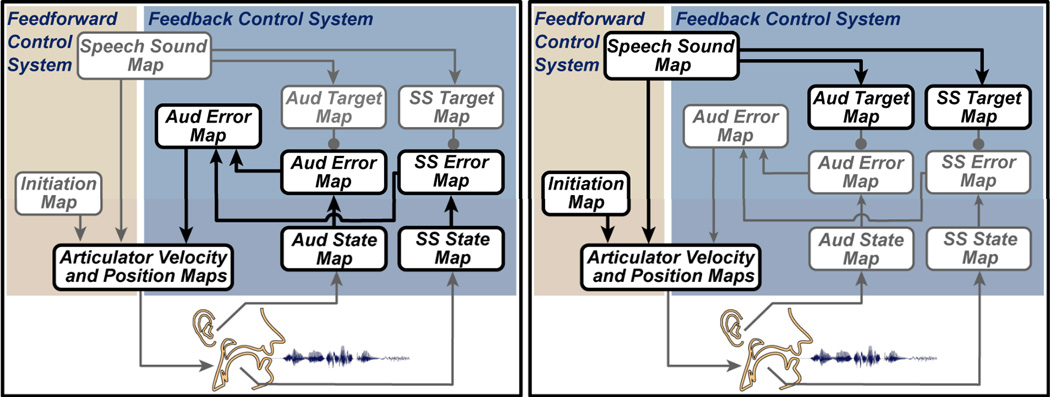Figure 4.
Learning in the DIVA model. Simplified DIVA model block diagrams indicate the mappings that are tuned during the two learning phases (heavy black outlines). Left: Early babbling learning phase. Pseudo-random motor commands to the articulators are associated with auditory and somatosensory feedback. The paired motor and sensory signals are used to tune synaptic projections from sensory error maps to the feedback control map. The tuned projections are then able to transform sensory error inputs into feedback-based motor commands. Right: Imitation learning phase. Auditory speech sound targets (encoded in projections from the speech sound map to the auditory target map) are initially tuned based on sample speech sounds from other speakers. These targets, somatosensory targets, and projections in the feedforward control system are tuned during attempts to imitate a learned speech sound target.

